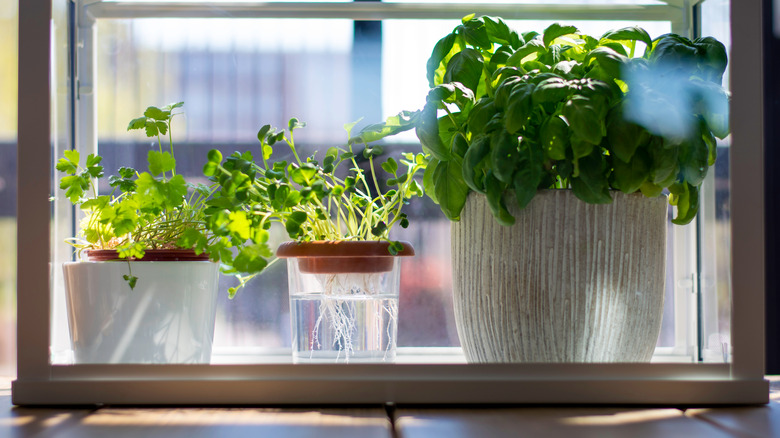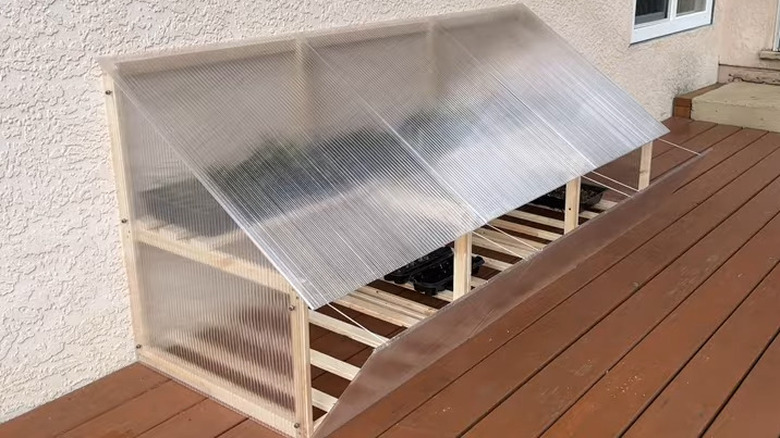This DIY Patio Greenhouse Has The Opportunity To Transform Your Yard
We may receive a commission on purchases made from links.
Gardens grow up, and eventually most reach a point where they really need to move out of your house. You've been starting seeds, nurturing seedlings, and overwintering plants in your dining room windows so long that your family is starting to call that room the greenhouse. A proper greenhouse is really what you need, but a greenhouse is enormously expensive to build from scratch, and it's not like your plants have a job and contribute anything to the household budget. What your plants need is a small place to stay warm on cold nights in early spring. What your garden, or your yard or flowerbed, needs is a miniature greenhouse, perhaps nestled against the house on a deck or patio.
YouTuber What's In The Garden (@KatesGarden) might just have the solution for you. Facing this dilemma, she built a three-section, two-tier mini-greenhouse out of multiwall polycarbonate panels (like these from Home Depot) and inexpensive finger-jointed furring or trim boards. The result is basically a little reach-in greenhouse with a top that flips up for easy access. She designed it around the dimensions of the two clear polycarbonate sheets, by far the most expensive part of the project that cost her around $130. If this entire enterprise sounds vaguely familiar, it might be because what @KatesGarden has discovered for herself is essentially the joy of cold frame gardening.
The advantages of a mini patio greenhouse
A cold frame is an elegant solution to the problems of extending your garden's growing season or protecting tender perennials from your flowerbeds. They can be made of everything from wood to cinder blocks to plastic water bottles as a way to winterproof your garden. And, as you'd expect, they have a lot in common — good and bad — with traditional greenhouses. The good is that they warm things up and can be used not only to start seeds early, as @KatesGarden does, but also to overwinter plants, force potted bulbs, propagate summer cuttings, and to help with hardening off plants.
Cold frames also have the weaknesses of a standard single-walled polyfilm greenhouse, the main one being that once the sun goes down, they quickly revert to the outside ambient temperature. This can be dealt with using some kind of thermal mass to retain the day's heat into the night, and here's one place where @KatesGarden's placement is a boon. Placing a cold frame next to a house carries with it a great benefit in terms of thermal mass, as anyone who's watched annuals survive winter in a foundation wall bed can attest to. Otherwise, thermal mass can be added in a lot of ways, like banking soil on the north side of the cold frame. Cold frames can also go from needing full winter sun for minimal warmth during the day to becoming a plant-destroying inferno during the summer, without adequate attention to temperature and ventilation — which is, fortunately, built in by virtue of the tilt-up top.

